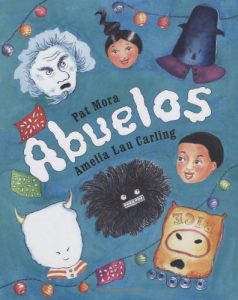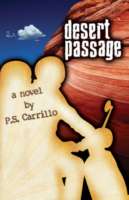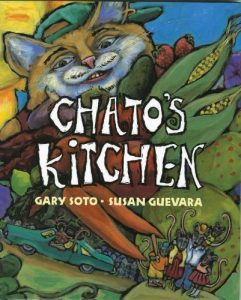 The images in this book highlight the lives of the men and women who struggle to exist while literally feeding this country. Countless words and studies over decades bemoan the plight of those who toil in the fields, but Rick Nahmias’s pictures bring farm workers to us in an unforgettable way, taking us beyond stoop labor stills and into their intimate moments and inner lives. Having traveled over four thousand miles to document California’s migrant workforce, Nahmias’s soulful images and incisive text go beyond one state’s issues, illuminating the bigger story about the human cost of feeding America. The Migrant Project includes the images and text of the traveling exhibition of the same name, along with numerous outtakes and an in-depth preface by Nahmias. Accompanied by a Foreword from United Farm Worker co-creator Dolores Huerta, essays by top farm worker advocates, and oral histories from farm workers themselves, this volume should find itself at home in the hands of everyone from the student and teacher, to the activist, the photography enthusiast, and the consumer.”Every day in the hot fields of California, hundreds of thousands of farmworkers toil for long hours at low pay to provide fruit and vegetables to feed our nation. Most Americans never see the faces of these hard-working men and women, and know little or nothing about the harsh conditions they endure. The Migrant Project has done an extraordinary job documenting these workers’ lives. Rick Nahmias’s powerful photographs and the beautiful essays of dedicated advocates tell an inspiring story of the farmworkers’ historic struggle for the respect, the dignity, and the justice they so obviously deserve.”–U.S. Senator Edward M. Kennedy, Massachusetts “Nahmias’s images starkly capture both the humanity of the farm workers who literally feed our country, and the inhumanity of a system which has kept them and their predecessors prisoners to poverty for decades. This book is a testament to the flesh-and-blood cost of feeding America.”–Arianna Huffington, author, editor-in-chief of The Huffington Post, and nationally syndicated columnistExhibition schedule for The Migrant Project photographs:Mexican Cultural Institute, Washington D.C., February 21-April 14, 2008Museum of Tolerance, Los Angeles, California, March 4-April 25, 2008For more information on immigrant and migrant worker issues, please access the following organizations:Farmworker JusticeCalifornia Rural Legal AssistanceNational Association of State Directors of Migrant EducationNational Council for La RazaInternational Relations Center Americas ProgramCongressional Hispanic Caucus InstituteGlobal Commission on International MigrationInstitute for Agriculture and Trade PolicyNational Farmworker MinistryNational Rural Funders CollaborativeNational Farm Worker AllianceSouthern Poverty Law CenterUMOS Clergy and Laity United for Economic JusticeAmerican Friends Service CommitteeAFL-CIOCoalition for Comprehensive Immigration ReformCatholic Campaign for Immigration Reform
The images in this book highlight the lives of the men and women who struggle to exist while literally feeding this country. Countless words and studies over decades bemoan the plight of those who toil in the fields, but Rick Nahmias’s pictures bring farm workers to us in an unforgettable way, taking us beyond stoop labor stills and into their intimate moments and inner lives. Having traveled over four thousand miles to document California’s migrant workforce, Nahmias’s soulful images and incisive text go beyond one state’s issues, illuminating the bigger story about the human cost of feeding America. The Migrant Project includes the images and text of the traveling exhibition of the same name, along with numerous outtakes and an in-depth preface by Nahmias. Accompanied by a Foreword from United Farm Worker co-creator Dolores Huerta, essays by top farm worker advocates, and oral histories from farm workers themselves, this volume should find itself at home in the hands of everyone from the student and teacher, to the activist, the photography enthusiast, and the consumer.”Every day in the hot fields of California, hundreds of thousands of farmworkers toil for long hours at low pay to provide fruit and vegetables to feed our nation. Most Americans never see the faces of these hard-working men and women, and know little or nothing about the harsh conditions they endure. The Migrant Project has done an extraordinary job documenting these workers’ lives. Rick Nahmias’s powerful photographs and the beautiful essays of dedicated advocates tell an inspiring story of the farmworkers’ historic struggle for the respect, the dignity, and the justice they so obviously deserve.”–U.S. Senator Edward M. Kennedy, Massachusetts “Nahmias’s images starkly capture both the humanity of the farm workers who literally feed our country, and the inhumanity of a system which has kept them and their predecessors prisoners to poverty for decades. This book is a testament to the flesh-and-blood cost of feeding America.”–Arianna Huffington, author, editor-in-chief of The Huffington Post, and nationally syndicated columnistExhibition schedule for The Migrant Project photographs:Mexican Cultural Institute, Washington D.C., February 21-April 14, 2008Museum of Tolerance, Los Angeles, California, March 4-April 25, 2008For more information on immigrant and migrant worker issues, please access the following organizations:Farmworker JusticeCalifornia Rural Legal AssistanceNational Association of State Directors of Migrant EducationNational Council for La RazaInternational Relations Center Americas ProgramCongressional Hispanic Caucus InstituteGlobal Commission on International MigrationInstitute for Agriculture and Trade PolicyNational Farmworker MinistryNational Rural Funders CollaborativeNational Farm Worker AllianceSouthern Poverty Law CenterUMOS Clergy and Laity United for Economic JusticeAmerican Friends Service CommitteeAFL-CIOCoalition for Comprehensive Immigration ReformCatholic Campaign for Immigration Reform
United States
Materials from United States of America
Star of Luis
When Luís’s father joins the army shortly after the start of World War II, Luís’s entire life changes. His mother decides to return to the dusty New Mexican village where she and her husband grew up. In Los Angeles, Luís had struggled to find a place in his ethnically diverse neighborhood and had been intimidated into ending a close friendship with a Jewish boy. In Las Manos, everyone is Hispanic and Catholic like Luís, but the way of life seems backward and slow. Luís and his mother stay in a cramped bungalow with his dying grandfather and sullen grandmother, and Luís must share a bed with his uncle, a priest. Then, just as Luís begins to feel more comfortable in Las Manos, he learns an settling fact-his family is not Catholic after all. They are Jewish, a secret that has been kept for generations. Angry and confused, Luís realizes he must confront his feelings about family, religion, and friends, and ultimately make his own decision about who he is. Glossary of Spanish words.
The Birthday Swap
With her teenage sister’s birthday rapidly approaching, five-year-old Lori, a young Mexican-American girl, sets out to find the perfect gift for Cookie, only to end up with special surprise of her very own.
First Day in Grapes
All year long, Chico’s family moves up and down the state of California to pick fruits and vegetables. Every September, Chico starts at a new school. Often, the other kids pick on him — maybe because he’s always new, or maybe because he speaks Spanish sometimes. But third grade promises to be different. He likes his teacher, and she recognizes his excellent abilities in math — he may even get to go to the math fair! When some fourth-grade bullies tease him, he surprises them with strengths of his own.
This book has been included in WOW’s Kids Taking Action Booklist. For our current list, visit our Boolist page under Resources in the green navigation bar.
Abuelos
 The tradition of los abuelos comes from northern New Mexico. In the cold months of midwinter, village men disappear to disguise themselves as scary old men and then descend on the children, teasing them and asking if they’ve been good. The abuelos encourage the little ones to dance and sing around huge bonfires. Afterwards, everyone enjoys cookies and empanadas. In this charming book, young Ray and Amelia move to a new village and experience the fright and fun of los abuelos for the first time. Amelia Lau Carling researched the region for her vibrant artwork, and author Pat Mora’s lively text captures the appeal of an old-world celebration now being revived.
The tradition of los abuelos comes from northern New Mexico. In the cold months of midwinter, village men disappear to disguise themselves as scary old men and then descend on the children, teasing them and asking if they’ve been good. The abuelos encourage the little ones to dance and sing around huge bonfires. Afterwards, everyone enjoys cookies and empanadas. In this charming book, young Ray and Amelia move to a new village and experience the fright and fun of los abuelos for the first time. Amelia Lau Carling researched the region for her vibrant artwork, and author Pat Mora’s lively text captures the appeal of an old-world celebration now being revived.
Alicia Afterimage

On the evening of September 24, 2004, sixteen-year-old Alicia MarÃa Betancourt was killed in a car accident. Popular, happy, fun-loving Alicia daughter, sister, and friend to so many gone in an instant. How would those left behind cope with such a sudden, devastating loss? Wrestling with grief, anger, mortality, and spirituality, Alicia’s loved ones struggle to create a lasting place in their hearts for someone who is no longer a physical presence. They share joyful and painful memories, and discover the resilient power of enduring friendship and love. In time, each person finds a way to heal while keeping Alicia’s vibrant spirit alive for those who knew her, and those who never will. Alicia Afterimage is a remarkable story of loss and recovery, but mostly it is a story of love. In this moving tribute to an extraordinary girl, readers will find a pathway through grief and a road map to remembrance. It is a book of comfort for all teens and adults who seek a way to ease the pain of losing someone they cherished.
Behind The Eyes
 Hector Robles has spent his sixteen years in the projects of El Paso trying to stay unnoticed. His peaceful obscurity is shattered when his impulsive brother challenges the leader of a gang called the Discípulos. Suddenly Hector is drawn into their world of violence and hopelessness. When a marker is placed on his life, Hector tries to escape by going away to a school for students with troubled pasts. But it isn’t easy to function when he’s paralyzed by the fear that they’ll find him, even there. Ultimately, by confronting external threats and the internal pain of his memories and mistakes, Hector begins to understand what manhood really means.
Hector Robles has spent his sixteen years in the projects of El Paso trying to stay unnoticed. His peaceful obscurity is shattered when his impulsive brother challenges the leader of a gang called the Discípulos. Suddenly Hector is drawn into their world of violence and hopelessness. When a marker is placed on his life, Hector tries to escape by going away to a school for students with troubled pasts. But it isn’t easy to function when he’s paralyzed by the fear that they’ll find him, even there. Ultimately, by confronting external threats and the internal pain of his memories and mistakes, Hector begins to understand what manhood really means.
Chato’s Kitchen
Crashboomlove: A Novel In Verse

In this novel in verse, unprecedented in Chicano literature, renowned poet Juan Felipe Herrera illuminates the soul of a generation. Drawn from his own life as well as a lifetime of dedication to young people, CrashBoomLove helps readers understand what it is to be a teen, a migrant worker, and a boy wanting to be a boy. Sixteen-year-old Cesar Garcia is careening. His father, Papi Cesar, has left the migrant circuit in California for his other wife and children in Denver. Sweet Mama Lucy tries to provide for her son with dichos and tales of her own misspent youth. But at Rambling West High School in Fowlerville, the sides are drawn: Hmongs vs. Chicanos vs. everybody vs. Cesar, the new kid on the block. Precise and profound, CrashBoomLove will appeal to and resonate with high school readers across the country.
Desert Passage

Miguel and Ramón are in big trouble with their family. The cousins were almost expelled from school for fighting, and just as they’re finishing up their final year in middle school and preparing to enter high school, their grades have dropped. Miguel’s father Rodrigo who, with his wife Connie, has raised Ramón since his father’s tragic death in a car accident has decided the boys need to be punished. So instead of going on the family’s summer vacation to Santa Fe, they’ll stay with their Abuelita Rosa in a remote town in northern Arizona and do chores around her place.Dreading a long, boring month with their grandmother in the middle of nowhere, the boys get started on the extensive list of tasks they are supposed to complete. Cleaning the shed seems like the least disagreeable one, and soon they find something interesting: a two-wheeled Vespa scooter covered with dust and cobwebs. Excited at their find, the boys decide fixing the scooter might enliven their stay. If they can get it to run, they’ll at least be able to get around town.The next morning, though, Miguel and Ramón wake to a quiet house, and they’re shocked to find their grandmother unconscious in her bed. When the ambulance takes her away to the hospital, the boys are left alone and unable to contact Miguel’s parents. Suddenly, the scooter seems to be the only answer to reaching their family, and so the boys gather food, water, sleeping bags, and the small amount of money they have and begin the long trip to New Mexico.Miguel and Ramón quickly learn that traveling across the country isn’t as easy as they had expected. Sharing the road with fast-moving eighteen-wheelers and camping in the cold desert all make for an exhausting trip. But along the way the boys see many wonderful sights including the Grand Canyon and the red rocks of Sedona and meet lots of interesting people: Frank, an old friend of their grandfather’s who helps them get the scooter ready for the trip; Turner, an attentive youth group counselor they meet at the Grand Canyon; and a group of scientists exploring an ancient Native American site. Most importantly, Miguel and Ramón will discover a lot about themselves through their growing independence as emergent young men.

